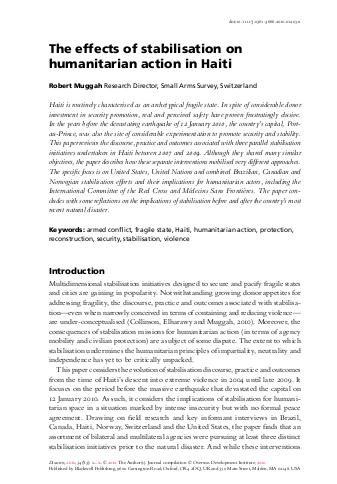
Haiti is routinely characterised as an archetypical fragile state. In spite of considerable donor investment in security promotion, real and perceived safety have proven frustratingly elusive. In the years before the devastating earthquake of 12 January 2010, the country’s capital, Portau- Prince, was also the site of considerable experimentation to promote security and stability. This paper reviews the discourse, practice and outcomes associated with three parallel stabilisation initiatives undertaken in Haiti between 2007 and 2009. Although they shared many similar objectives, the paper describes how these separate interventions mobilised very different approaches. The specific focus is on United States, United Nations and combined Brazilian, Canadian and Norwegian stabilisation efforts and their implications for humanitarian actors, including the International Committee of the Red Cross and Médecins Sans Frontières. The paper concludes with some reflections on the implications of stabilisation before and after the country’s most recent natural disaster.
Resource collections
- Earthquakes
- Learning from crises
- Topics
- UN Habitat - Urban Response Collection
- Urban Response - Urban Crisis Preparedness and Risk Reduction
- Urban Response Collection - Community Engagement and Social Cohesion
- Urban Response Collection - Economic Recovery
- Urban Response Collection - Environment and Climate Change
- Urban Response Collection - Housing, Land and Property
- Urban Response Collection - Urban Crisis Response, Recovery and Reconstruction
- Urban Response Collection - Urban Resilience
